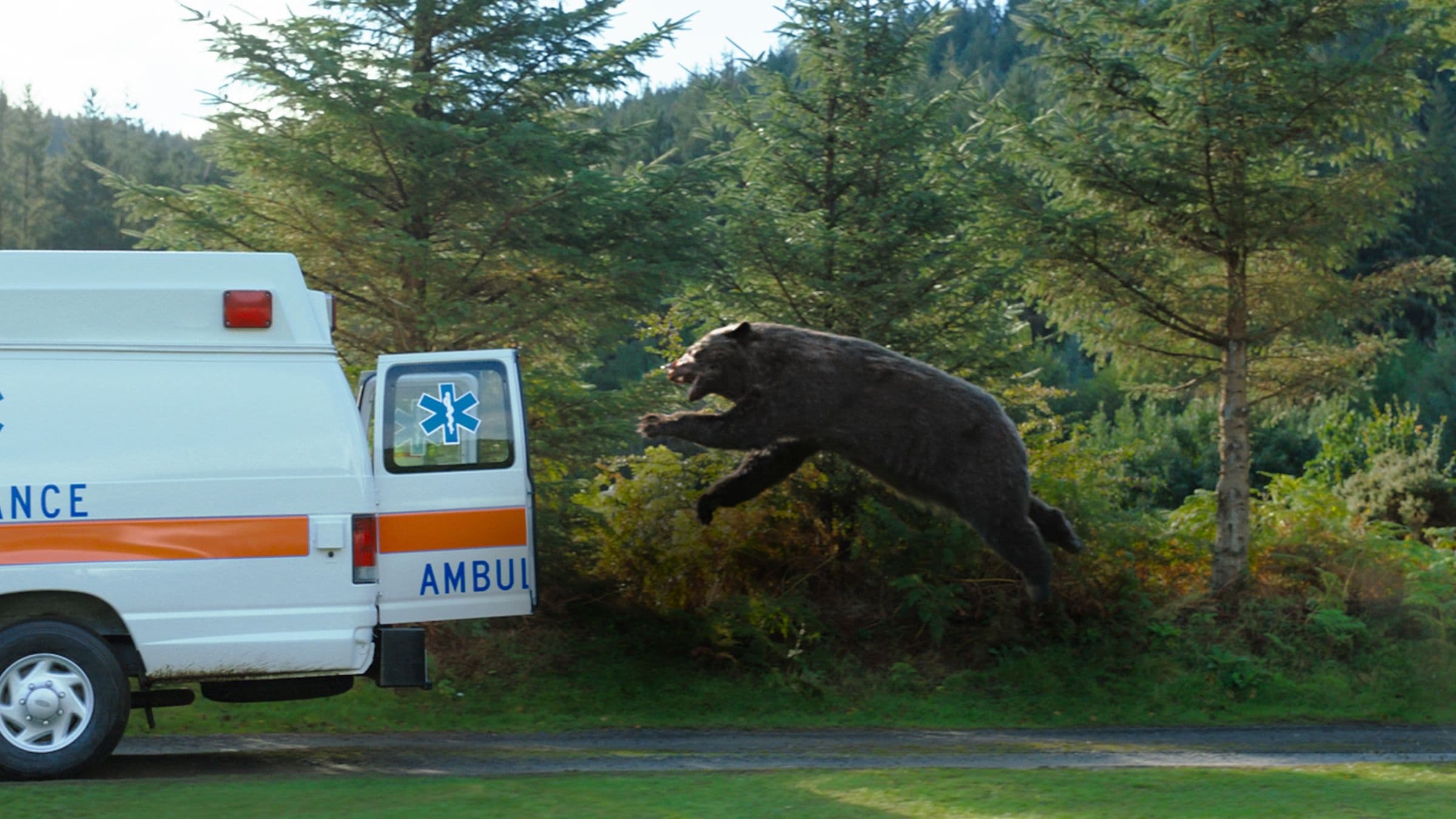Inspired by the real-life urban legend of “Pablo Escobear”– a black bear who died after ingesting 30+ kilograms of cocaine discarded by notorious drug trafficker Andrew C. Thornton in 1985– Cocaine Bear proposes a profound and thought-provoking hypothetical: what would happen if a bear ate 30 kilograms of cocaine… and lived? Opening with an educational Wikipedia citation, the film informs the viewer that black bears are usually nonviolent, nonconfrontational creatures (probably out of some moral obligation to prevent a modern day “Jaws Effect”— Cocaine Bear Effect?) but contrasts their natural disposition with the mind-altering effects of crack cocaine to make the harrowing conclusion that a “Cocaine Bear” (i.e., a bear high on crack cocaine) would be an unstoppable beast, driven by an unadulterated lust for human blood, flesh, and of course… cocaine.

Director Elizabeth Banks and writer Jimmy Warden present the inevitable rampage of the Cocaine Bear through the lens of an ensemble-slasher-horror-comedy-action-thriller-historical-drama-biopic, an intriguing smörgåsbord of tones as various characters find themselves encountering the film’s titular beast. Watching Cocaine Bear is an experience akin to watching a sketch comedy a la Saturday Night Live, if SNL was obligated to include a Cocaine Bear as the closing punchline to every joke. As such, Cocaine Bear‘s narrative structure has a very start and stop momentum depending on the viewer’s endearment to each recurring “sketch”, some of which are significantly more entertaining than others. Most of the film’s strongest scenes revolve around a trio of drug traffickers played by O’Shea Jackson Jr., Alden Ehrenreich, and Ray Liotta (in a posthumous performance). These three–Ehrenreich in particular– are cued into the exact wavelength of camp that Cocaine Bear demands, bickering amongst themselves as they pursue their lost cargoes of cocaine. Otherwise, the rest of the comedic pairings in the film are limited by weak chemistry and/or weak comedy that distracts from the film’s greatest asset: The Cocaine Bear.
And indeed, The Cocaine Bear is Cocaine Bear‘s saving grace, in its sporadically fleeting runtime across the film. Anyone going into this movie should probably know that after the opening scene, The Cocaine Bear finds herself absent for roughly 40 minutes before she resurfaces as the film’s central plot device. From there, the movie kicks into a much higher gear. All of the action set pieces revolving around The Cocaine Bear are entertaining, although competently directed at best. There are some surprising instances of extreme gore, which is good, but easy to become desensitized to with how normalized comically absurd CGI gore has become in mainstream media. Thankfully, with visual effects from WETA FX (A.K.A. the Avatar guys), Cocaine Bear‘s CGI is leagues above what its budget would suggest, with The Cocaine Bear herself being a legitimately good effect in many scenes.

Through the Cocaine Bear, Banks and Warden commentate on humanity’s corruption of nature, the cocaine-fueled rampage of the bear is a reciprocation of the cruelty humans inflicts upon the natural world every day. Cocaine Bear finds herself addicted to cocaine through no fault of her own, a victim of circumstance just as much as anyone who encounters her. And yet, Cocaine Bear is viewed as an antagonist by the very forces that facilitated her condition to begin with. As such, Cocaine Bear functions as an allegorical condemnation of Reaganite policies during the American War on Drugs, when culpability for drug use was pinned on those who used them, and not those who enabled their distribution to begin with. Just like the black bear, humans are naturally benign when we don’t antagonize each other. Without divulging into plot details, Cocaine Bear utilizes its alternative history premise to hypothesize a reality where the War on Drugs ended justly in the 1980s, opposed to continuing onwards to this day. Sadly, unlike Cocaine Bear, the violent rampages never ended in real life.

Cocaine Bear is the latest symbol of hope that the B-movie is alive and well, and that the profoundly weird still has its place in Hollywood’s mid-budget scene. Between Cocaine Bear, Violent Night and M3GAN, Universal has been doing an excellent job at producing enjoyable low-brow movies outside of the franchise sphere. Although Cocaine Bear certainly has franchise potential, with Elizabeth Banks expressing interest in creating a Cocaine Shark spin-off film. Let’s all keep our fingers crossed that Cocaine Bear eventually throws it down with Meth Gator in Godzilla vs. Kong-esque spectacle.
2.5/5 Stars

Straight fire Harrison!!!!!